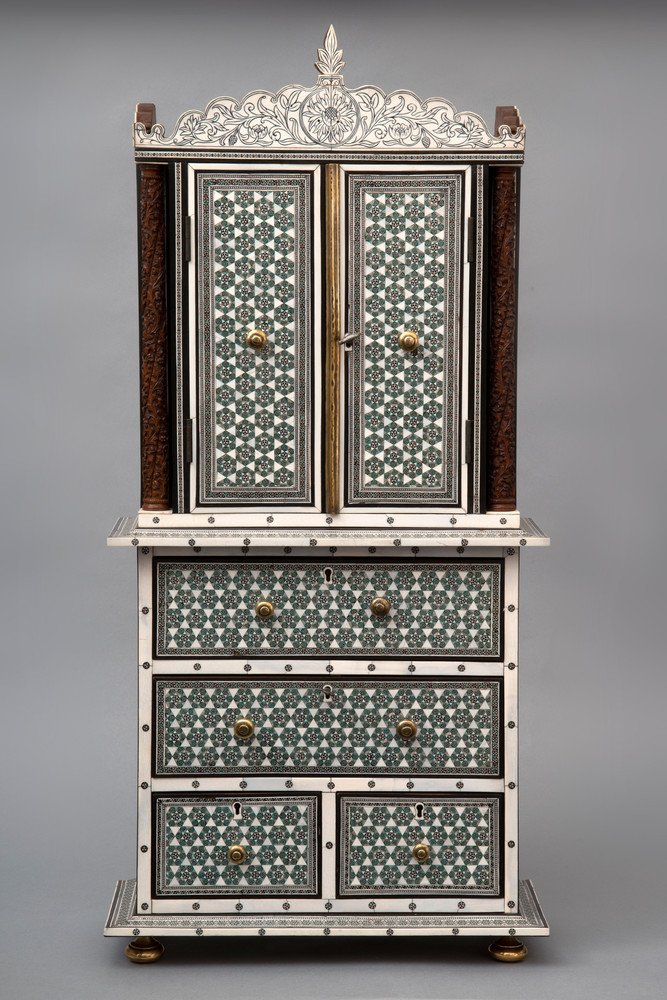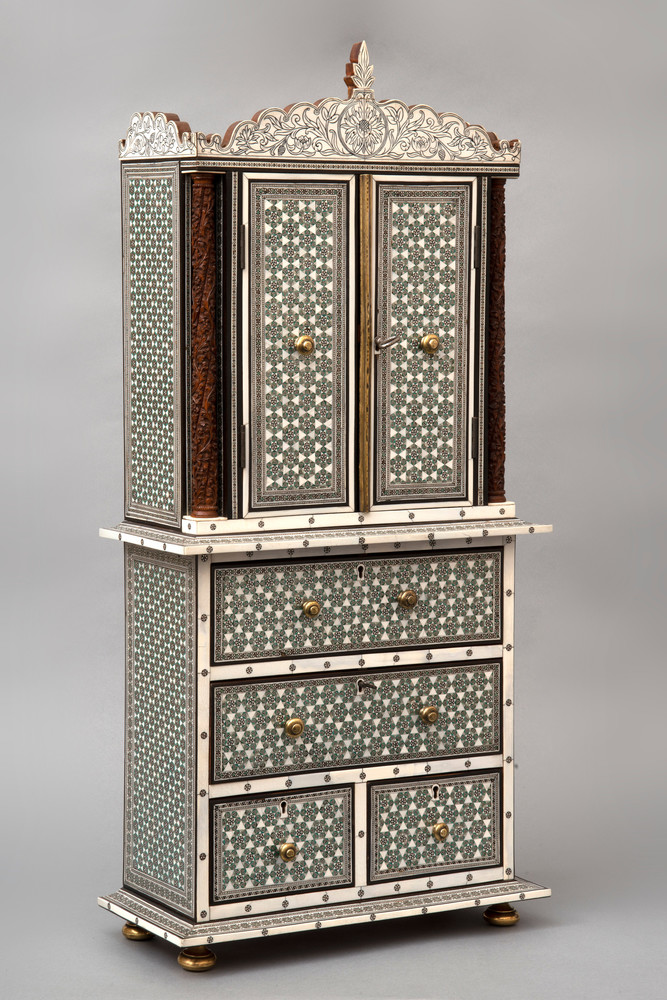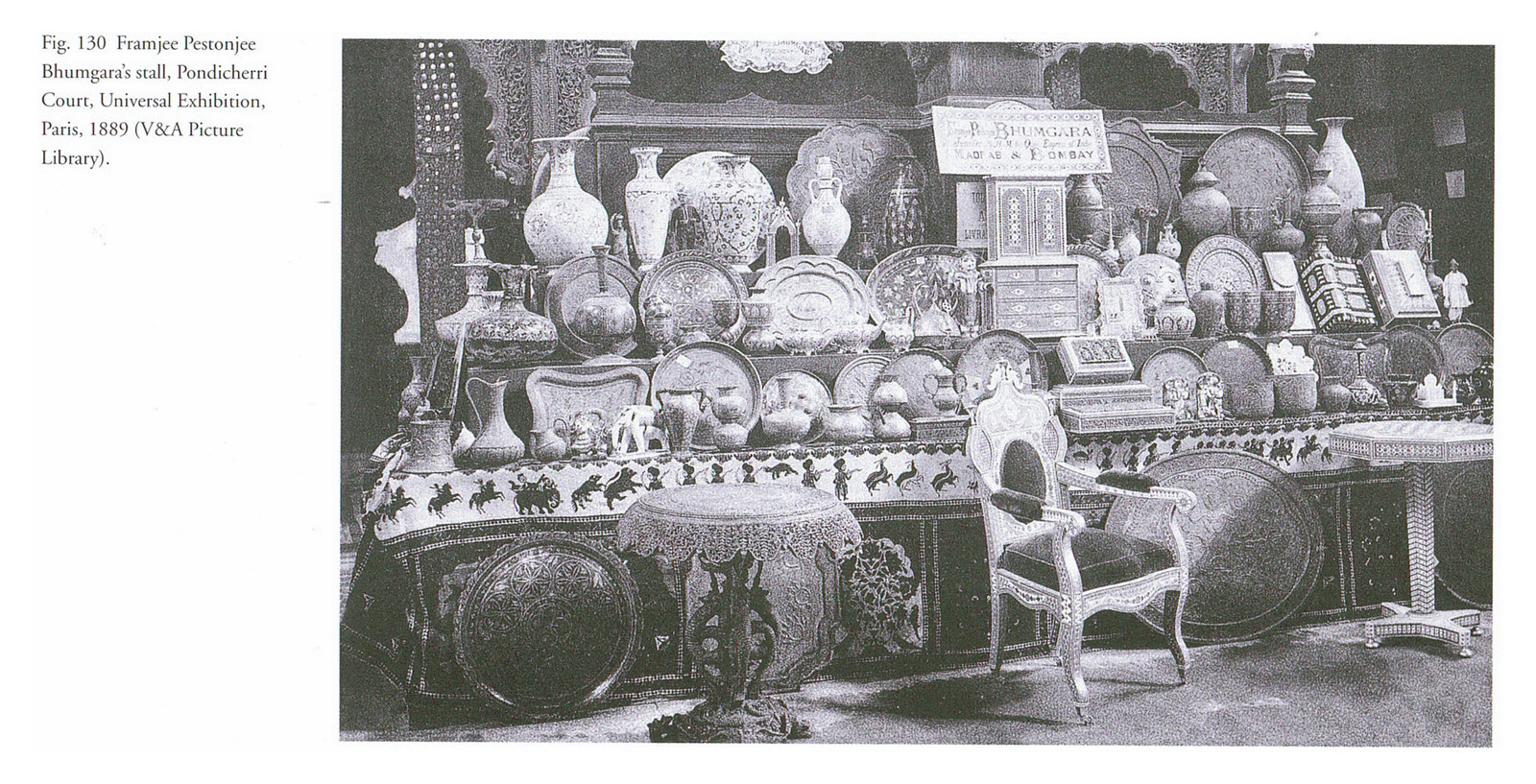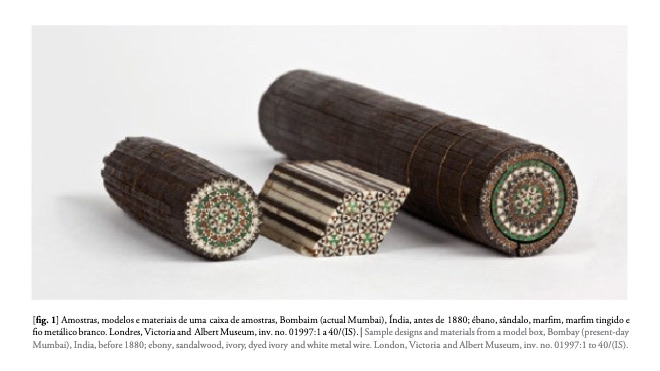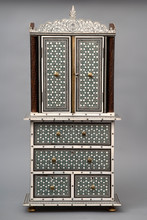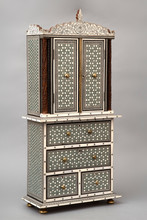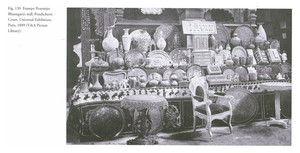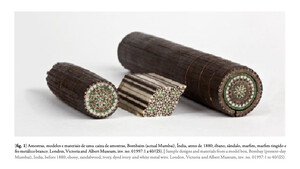AN ANGLO-INDIAN MINIATURE CABINET
An Anglo-Indian carved sandalwood and sadeli-work miniature cabinet. Bombay, ca 1850.
In two parts, carved with flowers. The two doors of the upper section enclose several pigeon holes, the base with four drawers.
Dimensions : 70 cm high.
Perfect condition, with original brass feet and brass handles.
Maybe from the store of Framjee Pestonjee Bhumgara - see second picture. This picture is from the V&A Picture Library, photograph made during the Universal Exhibition in Paris in 1889.
Background information about “Sadeliwork” :
The method of veneering sadeli mosaic involves the binding together of geometrically-shaped rods, each about 60 cm in length, of various materials, sometimes including horn, tin, sappan wood and ebony. They are arranged geometrically and then sliced through transversely and arranged into sheets of repeating patterns which are then glued onto the carcase. The main centre of production in India was Bombay and its district, the earliest known pieces appear to have been produced in the first decade of the 19th century. Commonly produced items veneered in sadeli were small, portable boxes, writing-cases, ink-stands, letter-openers, picture-frames and other such curious, although chairs and gaming-tables are known.
Bibliography :
• "Furniture from British India and Ceylon", Amin Jaffer.
